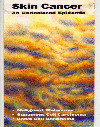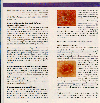



Sun Protection for Children
The Sun and Your Skin
According to AAD President Wilma F. Bergfeld, M.D., who presented the findings at the National Conference on Environmental Hazards to the Skin, 46 percent of the adults responding to the survey have experienced sun-related problems, with sunburn the most frequently mentioned (36 percent). Five percent have suffered skin cancer, including basal cell carcinoma, squamous cell carcinoma and malignant melanoma.
Among the natural hazards named, the most frequent are skin problems caused by insects and spiders (34 percent) and poison ivy (33 percent).
Among the man-made hazards, common problems are soaps or detergents (23 percent), cosmetics (12 percent) and metal jewelry (13 percent).
"The prevalence of hazards affecting the skin is increasing as environmental factors such as ozone depletion, ultraviolet radiation, pollution and occupational irritants increase the potential for skin disorders," Dr. Bergfeld said. "People need to be aware of the impact these hazards have on the skin, and measures need to be taken to prevent, treat and control them."
More than half of the survey respondents believed additional research and public education would assist in controlling or preventing skin-related problems. Other actions respondents indicated might help included: better product labeling (41 percent) and government regulation (33 percent). Almost two-thirds (59 percent) believed industry should be responsible for the clean up of environmental hazards affecting the skin.
Factors
The AAD consumer survey gathered information and opinions from 1,008 adults 18 and over. Overall, the higher the household income, the more frequent the experience with environmental skin problems. For example, household incomes of $50,000 or more had the highest incidence rates for sun-related injuries (59 percent), poison ivy (42 percent), and insects and spiders (41 percent).
Women respondents more frequently reported experience with skin problems perceived to be related to cosmetic products (21 percent) and response to metal jewelry (20 percent). Men, on the other hand, more frequently mentioned problems with industrial chemicals (13 percent).
"This survey confirms how widespread environmental skin damage is," Dr. Bergfeld said. She added that some types of environmental problems were cited far more frequently than expected.
"Only about 2 percent of the patients we dermatologists see come to us because of actual reactions to cosmetics, while 12 percent of the men and women responding in the survey say they've had problems with these products," Dr. Bergfeld said. "This could mean that people aren't seeking treatment, or they may believe that their skin condition is related to a cosmetic product when the cause is actually something else."
Opinion Research Corporation of Princeton, N.J., conducted the survey on behalf of the American Academy of Dermatology. The AAD, which has headquarters in Schaumburg, Illinois, represents physicians who specialize in the prevention, diagnosis and treatment of diseases and disorders of the skin, hair, and nails.
Have the dangers from depletion of stratospheric ozone been exaggerated? Prominent dermatologists don't think so, judging from the resolution passed at their national conference on environmental hazards of the skin held recently in Washington, D.C.
The more than 140 participants, including invited experts from government, industry, and non-profit associations as well as dermatologists, voted to support "the most rapid acceleration possible" of attempts to ban the use of ozone-depleting chemicals around the world.
Dermatologists have seen the unfortunate results of a half-century of unprotected suntanning -- an epidemic of malignant melanoma and other skin cancers. Any depletion of the protective ozone barrier is predicted to result in increased numbers of cataracts, skin cancers, and deaths from skin cancers. The Environmental Protection Agency estimates than an additional 12 million cases of skin cancer and 210,000 skin cancer deaths will occur during the next 50 years if atmospheric ozone depletion continues at its current rate.
At the same time, a comprehensive and balanced appraisal of ozone and its protective effects on all forms of life has just been published in the November issue of the Journal of the American Academy of Dermatology. At the close of his thorough review of the ozone issue, Brett Coldiron, M.D., a dermatologist affiliated with the University of Cincinnati Medical Center, explains why nations and industries are reluctant to stop using the chlorofluorocarbons (CFCs) that are so damaging to atmospheric ozone: because currently available substitutes are not only more expensive to use, but less efficient, more difficult to work with and dangerous. Dr. Coldiron also outlines some immediate steps that can be taken to preserve ozone. Some of these might include:
According to the physicians who drafted the AAD ozone resolution, the current Montreal protocol, which was signed by 42 nations in 1988 and 1990, does not go far enough or fast enough to forestall the increased numbers of fatalities predicted to occur. Currently, participating nations have agreed to phase out the use of all ozone-damaging chemicals by the year 2000. The U.S. has promised to discontinue their production by 1995.
The dermatologists' resolution was a result of discussions held during the National Conference on Environmental Hazards to the Skin. As a protective barrier and one of the largest organs of the body, skin absorbs many insults from its surroundings. The conference participants explored three broad areas of hazards to skin from the environment: ozone depletion and other atmospheric hazards; man-made and occupational hazards; and naturally-occurring hazards.
* A nanometer (nm) is one-billionth of a meter; UVA waves measure from 320 to 400 nm in length, UVB from 280 to 320 nm in length, and UVC from 200 to 280 nm.
Q. Does the depletion of stratospheric ozone by man-made chlorofluorocarbons (CFCs) have any effect on skin cancer incidence?
A. Not at present, since there is a 10-20 year lag time between exposure to ultraviolet light and the development of skin malignancy. There will be an increase in skin cancer in the future due to ozone depletion caused by CFCs.
Q. What are CFCs and why can't all countries ban them?
A. Chlorofluorocarbons (CFCs) were developed in 1930 as safe alternatives to toxic and flammable refrigerants that were being used at the time. CFCs are chemically unique compounds that are nonreactive and have very special and useful chemical properties. They are nontoxic to humans and yet have ideal vaporization temperatures for air conditioning, for expanding plastic foam for insulation for appliances and buildings. They also are excellent cleaning agents for delicate electronic and mechanical instruments. CFCs are inexpensive to manufacture, while substitutes will be much more expensive to produce and therefore more costly for smaller countries.
There are presently bans in the United States only on aerosol propellants used in spray cans. Under an international agreement signed by 42 nations in 1987, emissions of chlorofluorocarbons are to be reduced by 50 percent in the next decade by industrial countries, and over a longer period by developing nations. There are plans for a total ban of CFCs by the year 2000. It is estimated that 224,000 tons of propellant were released in 1989.
Q. How does ozone affect the amount of ultraviolet radiation that reaches the earth?
A. The ozone filter is a crucial protection against the carcinogenic impact of sunlight on humans. Ozone preferentially blocks ultraviolet B radiation that damages DNA. The ozone layer dramatically decreases the amount of ultraviolet B radiation that reaches the earth, but has little effect on ultraviolet A radiation. Recent data have shown that there is a recurrent ozone hole in the stratosphere over Antarctica in which ozone levels have been reduced as much as 60 percent. Atmospheric concentrations of trace gases such as carbon dioxide, methane, nitrous oxide, and CFCs have been increasing at an alarming rate.
Q. Is today's skin cancer a result of the current decrease in stratospheric ozone?
A. Because there is usually a lag period of between 10 - 20 years during which skin cancers develop, today's skin cancers probably have been induced over a period of the past several decades. They are probably not related to the present depletion in stratospheric ozone.
Q. Will ozone depletion produce more skin cancer?
A. Yes. A 1988 U.S. EPA study estimated that a one percent decrease in atmospheric ozone could cause a four to six percent increase in non-melanoma skin cancers (squamous cell and basal cell carcinomas) in Americans born before 2070.
Q. How does this translate in terms of new cases of skin cancers?
A. Unless there are controls on the causes of ozone depletion, estimates are that there could possibly be 163 to 310 million additional non-melanoma skin cancers and 840,000 to 1.4 million additional melanomas, which could result in an estimated 3.2 million deaths by 2075. Even modest reductions of ozone could result in an increased incidence of non-melanoma and melanoma skin cancers.
Q. Have these changes taken place yet?
A. There has not yet been a significant measurable change in UVB as a consequence of CFCs in the stratosphere in the United States. However, this may be related to the lack of sensitive and adequate measuring devices or to chemicals in the atmosphere screening out the ultraviolet rays.
Q. What other changes would there be if no controls are imposed?
A. Increased radiation from the sun could affect phytoplankton in the ocean. These small plants are responsible for 66 percent of the photosynthesis occurring on earth by which carbon dioxide is exchanged for oxygen. This could enhance the "greenhouse effect" and possibly reduce the quality of the air humans breathe. Animal plankton, the food staple for many forms of ocean animal life, is also vulnerable to increased levels of ultraviolet B radiation. Ultraviolet B radiation is known to decrease the growth of most known plant species and further ozone depletion could result in a decrease in the variety of plant life. However, exactly what would happen to the food chain is not clear at this time.